 Mysteries
Mysteries  Mysteries
Mysteries  History
History 10 Surprising Stories About the Texas Rangers
 Humans
Humans 10 Philosophers Who Were Driven Mad by Their Own Theories
 Miscellaneous
Miscellaneous 10 Video-Game-Worthy Weapons and Armors from History
 Weird Stuff
Weird Stuff 10 Psychics Who Accurately Predicted Wartime Events
 The Arts
The Arts 10 Pieces of Art Inspired by a Broken Heart
 Health
Health 10 Science Fiction-Sounding New Medical Treatments
 History
History 10 Surprising Facts About the Father of Submarine Warfare
 Space
Space Ten Astonishing New Insights into Alien Worlds
 Weird Stuff
Weird Stuff 10 Bizarre Summer Solstice Rituals Still Practiced Today
 Mysteries
Mysteries Top 10 Haunting Facts About the Ghost Ship MV Alta
 History
History 10 Surprising Stories About the Texas Rangers
 Humans
Humans 10 Philosophers Who Were Driven Mad by Their Own Theories
Who's Behind Listverse?

Jamie Frater
Head Editor
Jamie founded Listverse due to an insatiable desire to share fascinating, obscure, and bizarre facts. He has been a guest speaker on numerous national radio and television stations and is a five time published author.
More About Us Miscellaneous
Miscellaneous 10 Video-Game-Worthy Weapons and Armors from History
 Weird Stuff
Weird Stuff 10 Psychics Who Accurately Predicted Wartime Events
 The Arts
The Arts 10 Pieces of Art Inspired by a Broken Heart
 Health
Health 10 Science Fiction-Sounding New Medical Treatments
 History
History 10 Surprising Facts About the Father of Submarine Warfare
 Space
Space Ten Astonishing New Insights into Alien Worlds
 Weird Stuff
Weird Stuff 10 Bizarre Summer Solstice Rituals Still Practiced Today
10 Cool Facts About The Ice Age
Ice ages have always been something of a mystery. We know they can reduce entire continents into swathes of freezing tundra. We know there’s been 11 or so of them, and that they seem to happen at fairly regular intervals. We definitely know there was lots and lots of ice. Still, there is so much more to ice ages than meets the eye.
10 Giant Animals
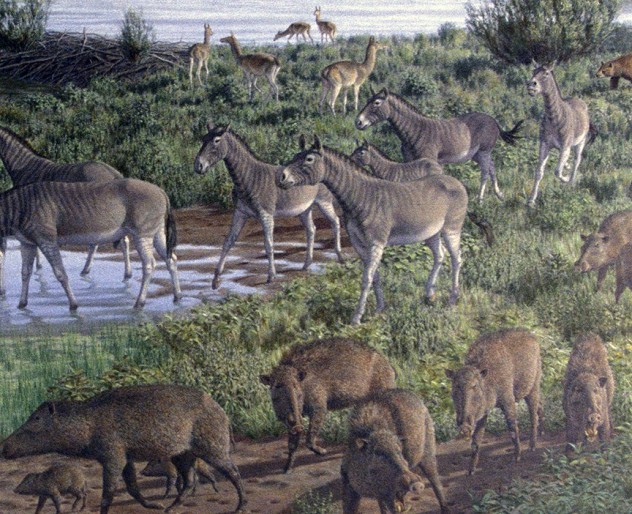
By the time the last ice age rolled around, evolution had already come up with mammals. The animals that managed to thrive on an ice age were generally quite large and fur-covered. Scientists call them “Megafauna,” and they managed to survive the cold climate because they had already evolved in freezing places such as Tibet. Ice ages essentially turned the world into their playground, as the other, less cold-resistant species died away.
Megafauna herbivores were accustomed to finding food in an icy environment, having adapted to their surroundings in various ways—for instance, an ice age rhinoceros may have had a shovel horn for removing snow. Carnivores like saber-toothed cats, short-faced bears, and dire wolves (yes, those giant Game of Thrones wolves are actually a very real thing from history) also had it easy. Although their prey was tough and fought back, it was also large and meaty, and there was a lot of it.
9Ice Age People
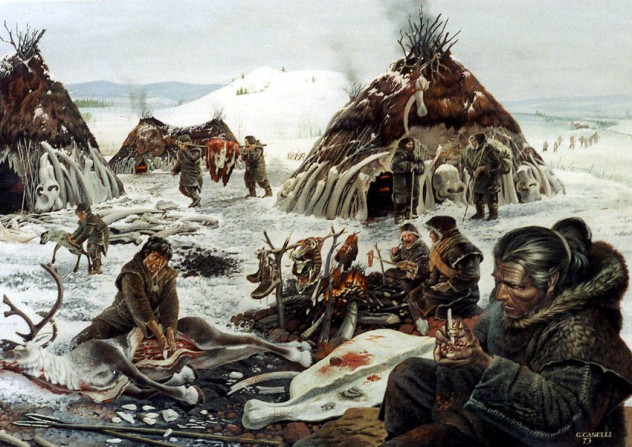
Despite not being particularly huge or hairy, Homo sapiens have braved it through the chilly tundras of ice ages for countless millennia. Life was cold and difficult, but people were inventive. For instance, 15,000 years ago, ice age humans lived in hunter-gatherer tribes, built innovative shelters from mammoth bones, and sewed warm clothes from animal furs. When there was plenty of game, they gathered food supplies and buried them in permafrost—nature’s own icebox.
Because the hunting tools at the time were mainly stone knives and arrowheads, complicated weaponry was rare. To capture and kill the huge ice age animals for food, people used traps. When the animal would set the trap, the men would attack it in a group and maul it to death.
8 Little Ice Ages
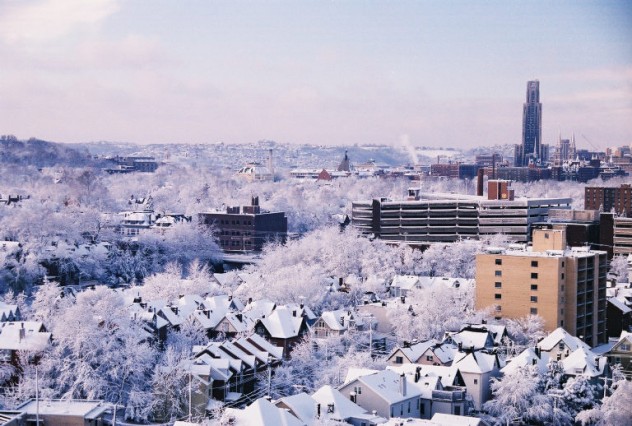
Sometimes, mini ice ages emerge between the actual, large-scale ones. They are not quite as devastating, but can still cause famine and disease due to failed crops and other nasty side effects.
The most recent of these little ice ages started sometime around the 12th and 14th century, and was at its worst between 1500 and 1850. For hundreds of years, the Northern Hemisphere was subjected to extremely cold weather. In Europe, the seas routinely froze and the cold, mountainous countries (such as Switzerland) could only watch as glaciers advanced, crushing villages. Years without summer were recorded, and the nasty weather conditions influenced every aspect of life and culture (perhaps contributing to why we think of the Middle Ages as a particularly gloomy period).
Science is still trying to figure out what caused this little ice age. The reason may have been some combination of heavy volcanic activity during the era and a temporary drop in the Sun’s solar energy.
7 A Warm Ice Age
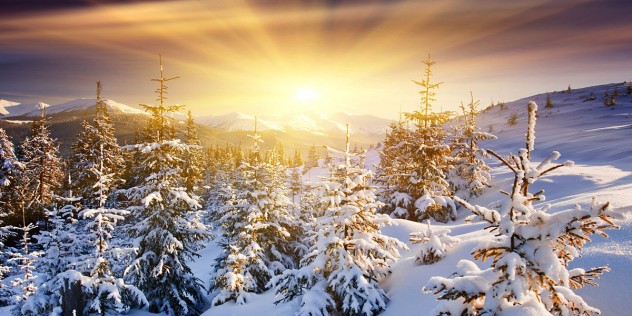
Some ice ages may actually have been pretty warm. Yes, the ground has been covered by vast amounts of ice, but the actual weather was pretty pleasant.
Sometimes, the events that lead to an ice age are so severe that even if the atmosphere was full of greenhouse gases (which keep the heat of the sun in the atmosphere, heating up the planet), the ice still begins to form because after the pollution gets thick enough, it might start bouncing the Sun’s rays back in space. Experts say this would turn the world into a giant “Baked Alaska” dessert—cold on the inside (ice on surface), hot on the outside (warm atmosphere).
6 Louis Agassiz
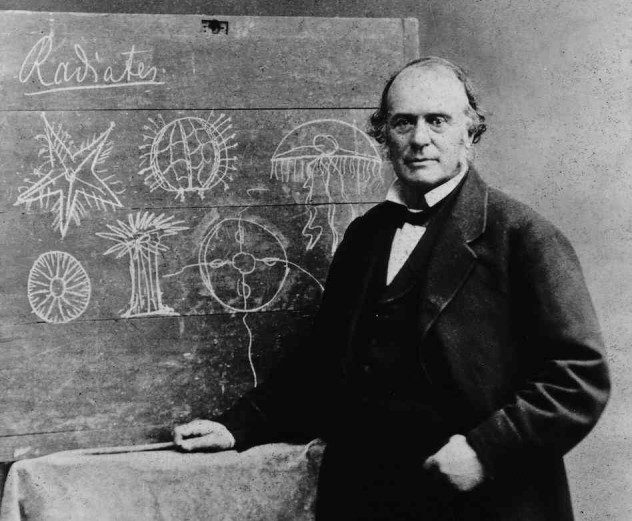
Ah, Louis Agassiz. This man whose name sounds vaguely like a tennis player was actually an esteemed scientist, one of the field-defining geniuses of the 19th century. He is revered as one of the founding fathers of American science, despite actually being a Frenchman.
Apart from his many other accomplishments, Agassiz is pretty much the sole reason we know about ice ages. Although others had played with the idea before, in 1837 he became the first person to seriously put the idea of a past ice age on the table. His theories and publications on all-encompassing ice fields that once covered large parts of the earth were dismissed as silly when he first presented them. Yet he pressed on and further research (and geological evidence) eventually made others believe in his “crazy theory.”
Curiously, his pioneering work on ice ages and glacial activity was just something of a hobby. He was actually an ichthyologist (scientist who specializes in studying fish).
5 Human Pollution Could Avert The Next Ice Age

The theories that ice ages repeat at semi-regular intervals no matter what we do are often at odds with theories about global warming. While the latter is most certainly a thing, some say it may actually be somewhat helpful in fighting future ice ages.
Carbon dioxide emissions caused by humans are considered a huge part of the current global warming problem. However, they may have one strange side effect. According to researchers at Cambridge University, human CO2 emissions may be able to stop the next ice age. It works like this: Although Earth’s planetary cycle tries to jump-start ice ages every once in a while, the only way it can begin is if the carbon dioxide levels of the atmosphere are exceptionally low. By pumping out CO2, humanity may have accidentally made ice ages temporarily impossible.
And even if concern over global warming (which is also a pretty bad thing) makes humans significantly reduce our CO2 emissions, we can absolutely do that too. By now, we’ve sent so much of the stuff in atmosphere that even if we stopped producing it today, the carbon dioxide concentrations would still be able to prevent the ice age for at least 1,000 years.
4 Ice Age Plants

Predators had it relatively easy during the ice ages—after all, they could always eat other animals. But what did the herbivores eat?
As it turns out, pretty much anything they wanted. There were lots of plants that could handle the ice age. Even the coldest ice ages featured steppes—grassland and shrubland areas—that allowed mammoths and other plant-eating animals their source of nourishment. These grazing grounds were bustling with the kinds of plants that could grow in a cold, dry weather, such as spruce and pine. In warmer areas, species such as birch and willow were also abundant. All in all, the climate on these vegetation areas was probably quite similar to, say, Siberia. The actual plants may have been quite a lot different from their modern counterparts, though—we have very little knowledge of how individual plants adapted to ice age environments.
However, that’s not to say ice ages haven’t destroyed their share of vegetation. If a plant was not able to adapt to the climate, its only options were migration via seeds, or extinction. For instance, Victoria, Australia used to have some of the most diverse plant life in the world, until the ice age wiped out a good chunk of it.
3 Himalayas May Have Caused An Ice Age
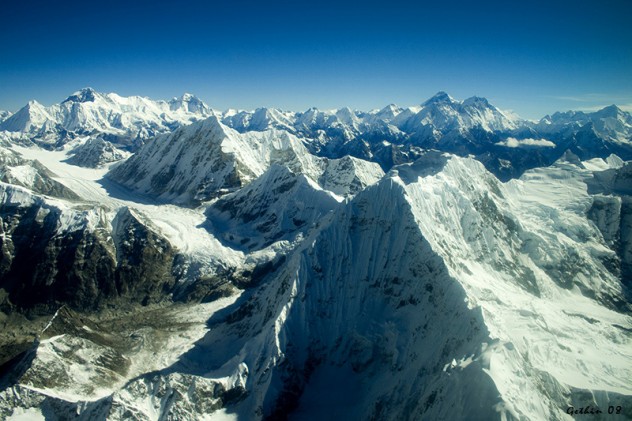
Mountains are not generally famous for actively causing anything, except maybe the occasional avalanche—their whole point is just standing there and being huge. The Himalayas prove this image wrong, though. They may have been directly responsible for causing an ice age.
When the landmasses of India and Asia collided 40-50 million years ago, the impact crunched up massive amounts of stone into the Himalaya mountain range. This exposed massive amounts of “fresh” stone to the elements. This immeasurably huge stone bulk started chemically eroding, a process that removed significant amounts of carbon dioxide from the atmosphere over time. This, in turn, may have allowed the planet’s climate to cool enough to trigger an ice age.
2 Snowball Earth
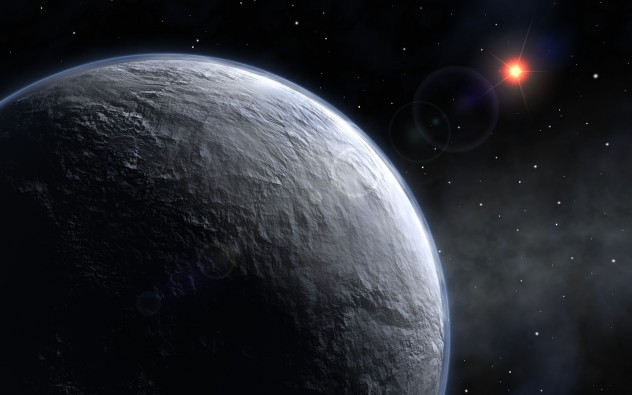
With most ice ages, ice sheets only cover parts of the world. Even a particularly severe ice age is said to cover only about one-third of the globe.
And then there is Snowball Earth.
Snowball Earth is the life-destroying granddaddy of ice ages. It’s the ultimate deep freeze, where literally every single part of the planet’s surface is frozen, until the Earth is just a huge snowball hurtling through space. What little life can survive a total freeze either clings to the rare zones where there is relatively little ice or, in the case of plants, in the few spots where there is enough sunlight to allow photosynthesis.
According to some evidence, a complete Snowball Earth has happened at least once, 716 million years ago. There may be more.
1 The Garden Of Eden
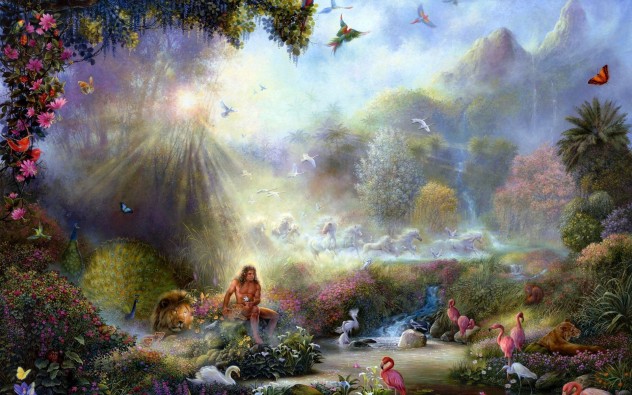
Some scientists are extremely convinced that the Garden of Eden was real. They say it was in Africa, and was the sole reason our ancestors survived the ice age.
A little under 200,000 years ago, a particularly hostile ice age was killing species left and right. Luckily, a small band of early humans was able to last through the terrifying cold. They stumbled upon the coast of what is now South Africa. Despite the ice reaping rewards all over the world, this area remained free of ice and entirely habitable. Its soil was rich in nutrients and bounty was plentiful. There were many natural caves to use as shelters. For a young species fighting for their survival, it was nothing short of a paradise.
The human population in the “Garden of Eden” was thought to be just a few hundred individuals. This theory, which is supported by many experts but still lacks conclusive evidence, seems to fit research results that show humans have far less genetic diversity than most other species.
Pauli Poisuo also writes for Cracked.com. Why not follow him on Twitter?








